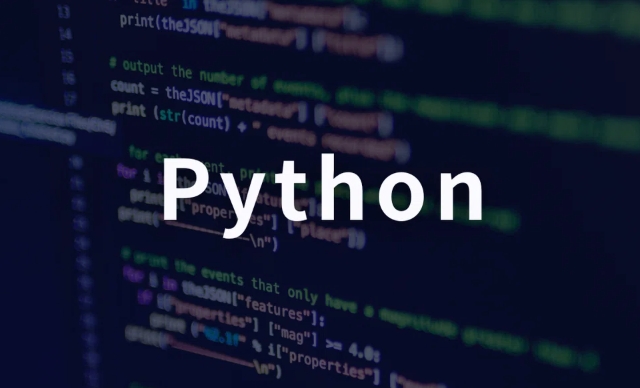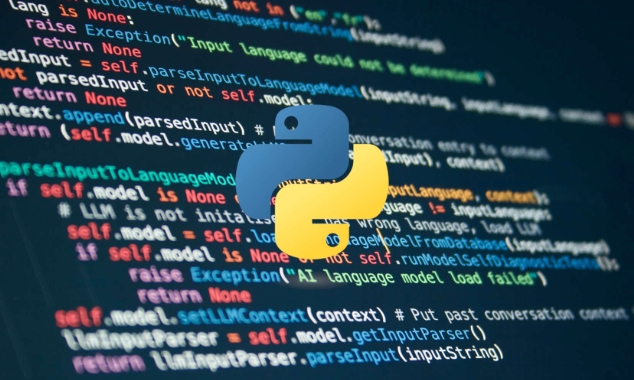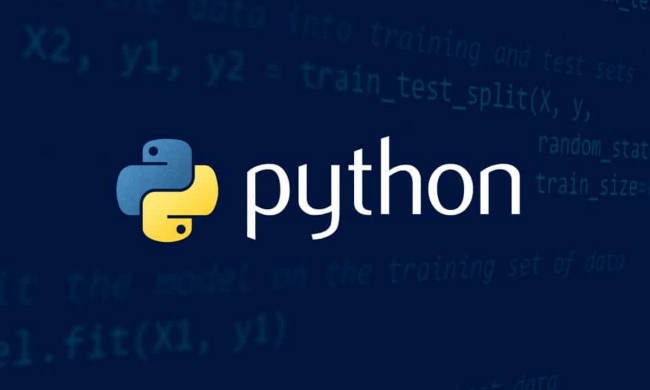Python is widely used on Databricks for data processing, analytics, and machine learning. 1. Notebook supports writing Python code directly, with a good interactive experience. You can use %run to introduce other Notebooks; 2. It is recommended to use Spark DataFrame for distributed processing, Pandas is only suitable for stand-alone data; 3. The Spark API can be called through PySpark, which supports filtering, aggregation and other operations, and combines SQL query to improve efficiency; 4. Library management recommends installing packages at the cluster level, and can also be temporarily installed by %pip install, but you need to pay attention to version conflicts and compatibility issues. Rational use of cache and resource allocation can further improve performance.

Python is one of the most commonly used programming languages on Databricks, especially suitable for data processing, analysis and machine learning. If you are already using Databricks and are familiar with Python, you can basically get started seamlessly.

Using Python in Notebook
Databricks' Notebook supports writing Python code directly, and the interactive experience is good. You can run every piece of code like you would on a local Jupyter Notebook.
- After writing the code, press
Shift Enterto run -
%runcan be used to introduce other Notebooks to achieve modular development - If you want to use Pandas, be careful that it can only process stand-alone data, and Spark DataFrame is more suitable for distributed processing
For example, when you read a CSV file, you can write it directly like this:

df = spark.read.csv("/FileStore/tables/data.csv", header=True, inferSchema=True)Then display the data content:
display(df)
Using Python with Spark
The biggest advantage of Databricks is that it has built-in Apache Spark. Python can call the Spark API through PySpark for large-scale data processing.

- Basic operations include creating DataFrame, filtering, aggregation, etc.
- You can use SQL query in combination with Python, for example:
df.createOrReplaceTempView("table")and then use%sqlto execute SQL - Pay attention to the rational use of cache (
.cache()or.persist()) to improve the efficiency of repeated calculations
For example, suppose you want to filter out data with sales of more than 1,000:
high_sales = df.filter(df["sales"] > 1000)
Then do a group statistics:
result = high_sales.groupBy("category").sum("sales")Install and manage Python packages
Databricks provides library management functions, allowing you to install third-party packages at the cluster level or in Notebooks.
- It is recommended to add the required libraries in "Cluster → Libraries", such as pandas, numpy, scikit-learn, etc.
- You can also use
%pip installto temporarily install in the current session (for quick testing) - It is not recommended to use
%pip installfrequently, as it can easily lead to environmental confusion or version conflicts.
Some common libraries are installed as follows:
%pip install matplotlib %pip install seaborn
However, it should be noted that some libraries that rely on C extensions may not be installed directly on Databricks. At this time, you can consider uploading using DBFS or packaging wheel files.
Basically that's it. Python is very flexible on Databricks. The key is to use PySpark and standard Python libraries, while paying attention to resource management and cluster configuration.
The above is the detailed content of Using Python in Databricks. For more information, please follow other related articles on the PHP Chinese website!

Hot AI Tools

Undress AI Tool
Undress images for free

Undresser.AI Undress
AI-powered app for creating realistic nude photos

AI Clothes Remover
Online AI tool for removing clothes from photos.

Clothoff.io
AI clothes remover

Video Face Swap
Swap faces in any video effortlessly with our completely free AI face swap tool!

Hot Article

Hot Tools

Notepad++7.3.1
Easy-to-use and free code editor

SublimeText3 Chinese version
Chinese version, very easy to use

Zend Studio 13.0.1
Powerful PHP integrated development environment

Dreamweaver CS6
Visual web development tools

SublimeText3 Mac version
God-level code editing software (SublimeText3)
 Polymorphism in python classes
Jul 05, 2025 am 02:58 AM
Polymorphism in python classes
Jul 05, 2025 am 02:58 AM
Polymorphism is a core concept in Python object-oriented programming, referring to "one interface, multiple implementations", allowing for unified processing of different types of objects. 1. Polymorphism is implemented through method rewriting. Subclasses can redefine parent class methods. For example, the spoke() method of Animal class has different implementations in Dog and Cat subclasses. 2. The practical uses of polymorphism include simplifying the code structure and enhancing scalability, such as calling the draw() method uniformly in the graphical drawing program, or handling the common behavior of different characters in game development. 3. Python implementation polymorphism needs to satisfy: the parent class defines a method, and the child class overrides the method, but does not require inheritance of the same parent class. As long as the object implements the same method, this is called the "duck type". 4. Things to note include the maintenance
 Explain Python generators and iterators.
Jul 05, 2025 am 02:55 AM
Explain Python generators and iterators.
Jul 05, 2025 am 02:55 AM
Iterators are objects that implement __iter__() and __next__() methods. The generator is a simplified version of iterators, which automatically implement these methods through the yield keyword. 1. The iterator returns an element every time he calls next() and throws a StopIteration exception when there are no more elements. 2. The generator uses function definition to generate data on demand, saving memory and supporting infinite sequences. 3. Use iterators when processing existing sets, use a generator when dynamically generating big data or lazy evaluation, such as loading line by line when reading large files. Note: Iterable objects such as lists are not iterators. They need to be recreated after the iterator reaches its end, and the generator can only traverse it once.
 How to handle API authentication in Python
Jul 13, 2025 am 02:22 AM
How to handle API authentication in Python
Jul 13, 2025 am 02:22 AM
The key to dealing with API authentication is to understand and use the authentication method correctly. 1. APIKey is the simplest authentication method, usually placed in the request header or URL parameters; 2. BasicAuth uses username and password for Base64 encoding transmission, which is suitable for internal systems; 3. OAuth2 needs to obtain the token first through client_id and client_secret, and then bring the BearerToken in the request header; 4. In order to deal with the token expiration, the token management class can be encapsulated and automatically refreshed the token; in short, selecting the appropriate method according to the document and safely storing the key information is the key.
 Explain Python assertions.
Jul 07, 2025 am 12:14 AM
Explain Python assertions.
Jul 07, 2025 am 12:14 AM
Assert is an assertion tool used in Python for debugging, and throws an AssertionError when the condition is not met. Its syntax is assert condition plus optional error information, which is suitable for internal logic verification such as parameter checking, status confirmation, etc., but cannot be used for security or user input checking, and should be used in conjunction with clear prompt information. It is only available for auxiliary debugging in the development stage rather than substituting exception handling.
 How to iterate over two lists at once Python
Jul 09, 2025 am 01:13 AM
How to iterate over two lists at once Python
Jul 09, 2025 am 01:13 AM
A common method to traverse two lists simultaneously in Python is to use the zip() function, which will pair multiple lists in order and be the shortest; if the list length is inconsistent, you can use itertools.zip_longest() to be the longest and fill in the missing values; combined with enumerate(), you can get the index at the same time. 1.zip() is concise and practical, suitable for paired data iteration; 2.zip_longest() can fill in the default value when dealing with inconsistent lengths; 3.enumerate(zip()) can obtain indexes during traversal, meeting the needs of a variety of complex scenarios.
 What are python iterators?
Jul 08, 2025 am 02:56 AM
What are python iterators?
Jul 08, 2025 am 02:56 AM
InPython,iteratorsareobjectsthatallowloopingthroughcollectionsbyimplementing__iter__()and__next__().1)Iteratorsworkviatheiteratorprotocol,using__iter__()toreturntheiteratorand__next__()toretrievethenextitemuntilStopIterationisraised.2)Aniterable(like
 What are Python type hints?
Jul 07, 2025 am 02:55 AM
What are Python type hints?
Jul 07, 2025 am 02:55 AM
TypehintsinPythonsolvetheproblemofambiguityandpotentialbugsindynamicallytypedcodebyallowingdeveloperstospecifyexpectedtypes.Theyenhancereadability,enableearlybugdetection,andimprovetoolingsupport.Typehintsareaddedusingacolon(:)forvariablesandparamete
 Python FastAPI tutorial
Jul 12, 2025 am 02:42 AM
Python FastAPI tutorial
Jul 12, 2025 am 02:42 AM
To create modern and efficient APIs using Python, FastAPI is recommended; it is based on standard Python type prompts and can automatically generate documents, with excellent performance. After installing FastAPI and ASGI server uvicorn, you can write interface code. By defining routes, writing processing functions, and returning data, APIs can be quickly built. FastAPI supports a variety of HTTP methods and provides automatically generated SwaggerUI and ReDoc documentation systems. URL parameters can be captured through path definition, while query parameters can be implemented by setting default values ??for function parameters. The rational use of Pydantic models can help improve development efficiency and accuracy.






